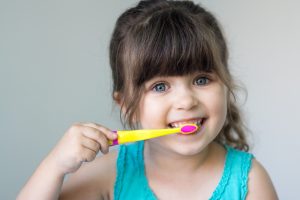 Around age 16 months, toddlers love to brush their own teeth (with your help). And learning how to keep those pearly whites clean is a big self-care milestone! But when it comes to choosing a toothbrush for your tot, the choices can seem overwhelming.
Around age 16 months, toddlers love to brush their own teeth (with your help). And learning how to keep those pearly whites clean is a big self-care milestone! But when it comes to choosing a toothbrush for your tot, the choices can seem overwhelming.
We’ve got you covered with expert tips.
Highlights:
|
To start, let’s take a look at the difference between manual and electric toothbrushes.
Manual or Electric Toothbrush: Which Is Best for Toddlers?
According to the American Academy of Pediatric Dentistry (AAPD), both manual and electric toothbrushes are effective when used correctly, and you can find toddler-sized versions of both types. However, there are some pros and cons to consider.
One upside of manual toothbrushes is that they may be easier for little hands to grasp and use. Even electric toothbrushes designed for toddlers tend to have larger handles (for batteries) and larger heads (for the rotating bristles).
Manual toothbrushes may also be more efficient, simply because they hit multiple teeth at one time. Electric toothbrushes hit only tooth at a time, but they do a more thorough job of cleaning… so if your toddler has the patience, an electric toothbrush may do a slightly more thorough job!
Tips for Choosing a Toothbrush
Here are a few pointers to help you find a toothbrush that gets your child excited about brushing their teeth:
- Take a test drive. You might consider having your toddler try both manual and electric toothbrushes – each for a few days in a row. Do they have a preference or seem to brush better with one over the other?
- Bring your toddler toothbrush shopping. Inviting your little one to help choose their toothbrush can get them excited to use it!
- Look for the ADA stamp of approval. The American Dental Association approves toothbrushes that meet its high standards. Look for an ADA-approved seal on the toothbrush packaging.
- Make sure it’s for toddlers. Toddler toothbrushes have smaller heads and handles than child and adult-sized brushes, making it easier and more effective for small hands and mouths.
- Try one with a timer. Many toddler toothbrushes come with built-in timers that light up or play music. This can help your toddler remember when to switch to a new section of the mouth, or how long to keep brushing.
- Use soft bristles. Soft bristles are best for getting teeth clean without damaging the gums or teeth enamel.
Once you find a toothbrush that motivates your toddler to do the job themselves, remember that they’re still practicing brushing their teeth. They will need you to guide them and do some additional brushing until they’re about 7 years old.








